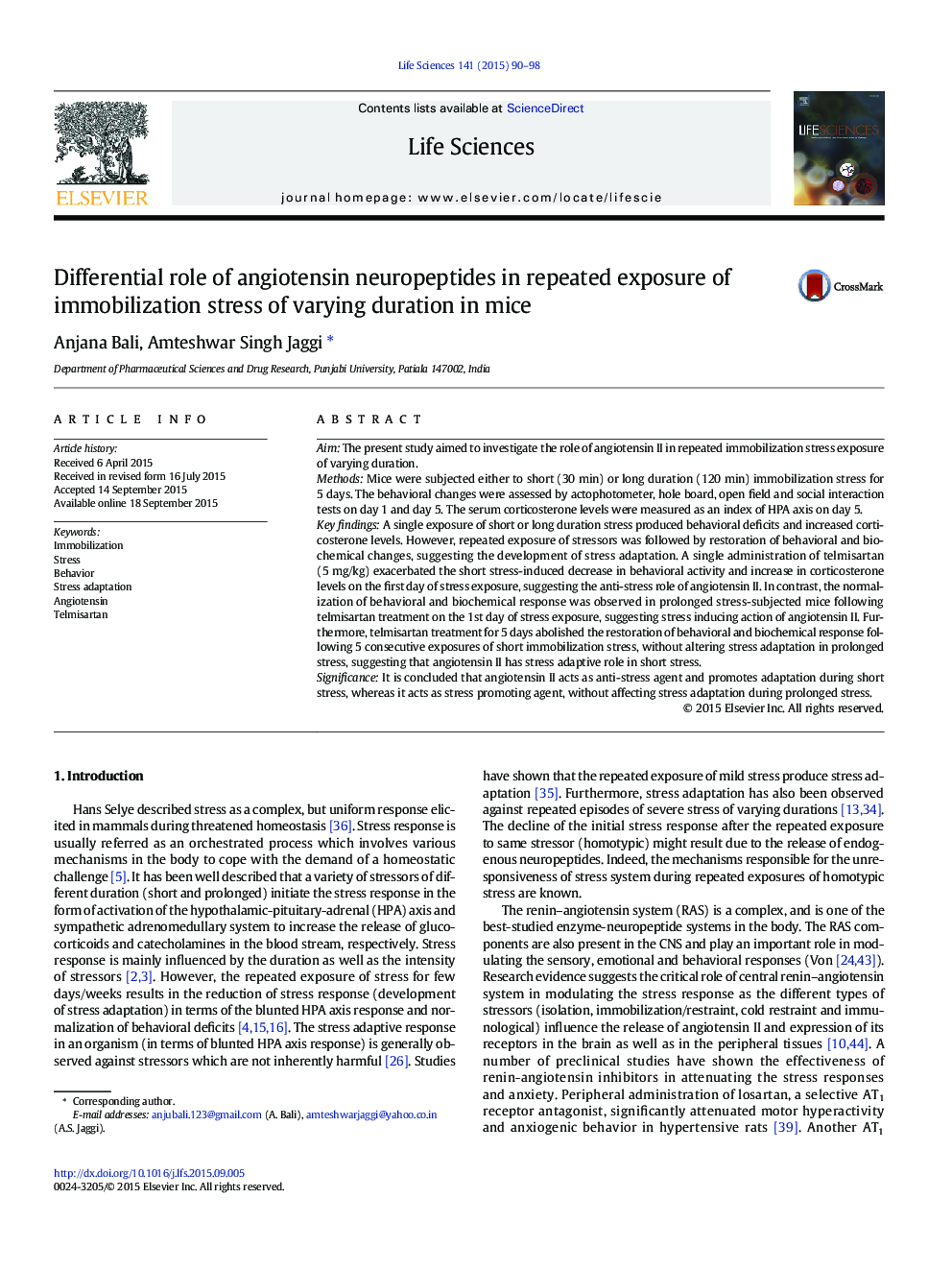| کد مقاله | کد نشریه | سال انتشار | مقاله انگلیسی | نسخه تمام متن |
|---|---|---|---|---|
| 5841573 | 1560587 | 2015 | 9 صفحه PDF | دانلود رایگان |
AimThe present study aimed to investigate the role of angiotensin II in repeated immobilization stress exposure of varying duration.MethodsMice were subjected either to short (30Â min) or long duration (120Â min) immobilization stress for 5Â days. The behavioral changes were assessed by actophotometer, hole board, open field and social interaction tests on day 1 and day 5. The serum corticosterone levels were measured as an index of HPA axis on day 5.Key findingsA single exposure of short or long duration stress produced behavioral deficits and increased corticosterone levels. However, repeated exposure of stressors was followed by restoration of behavioral and biochemical changes, suggesting the development of stress adaptation. A single administration of telmisartan (5Â mg/kg) exacerbated the short stress-induced decrease in behavioral activity and increase in corticosterone levels on the first day of stress exposure, suggesting the anti-stress role of angiotensin II. In contrast, the normalization of behavioral and biochemical response was observed in prolonged stress-subjected mice following telmisartan treatment on the 1st day of stress exposure, suggesting stress inducing action of angiotensin II. Furthermore, telmisartan treatment for 5Â days abolished the restoration of behavioral and biochemical response following 5 consecutive exposures of short immobilization stress, without altering stress adaptation in prolonged stress, suggesting that angiotensin II has stress adaptive role in short stress.SignificanceIt is concluded that angiotensin II acts as anti-stress agent and promotes adaptation during short stress, whereas it acts as stress promoting agent, without affecting stress adaptation during prolonged stress.
Journal: Life Sciences - Volume 141, 15 November 2015, Pages 90-98
